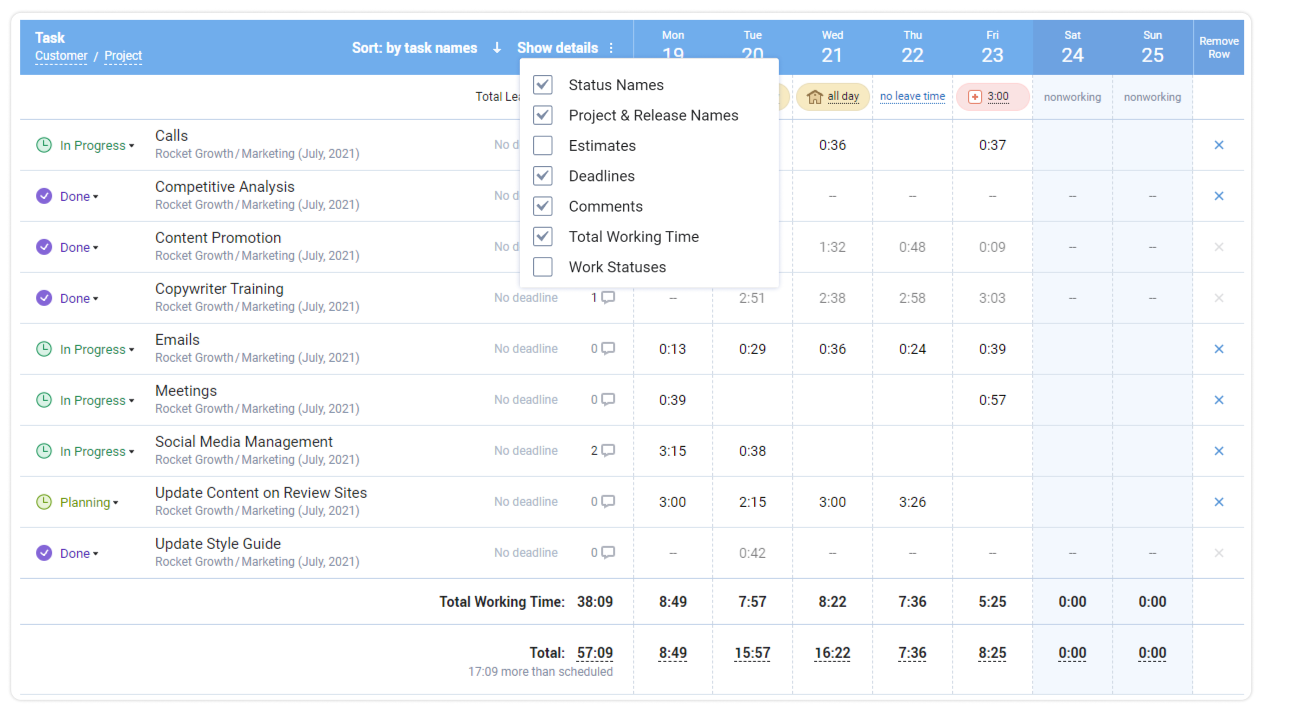
Successful projects have several things in common, including attainable and measurable goals, realistic time and money budgets, properly allocated resources, proper risk management and successful talent management. All these ingredients are impossible to use and benefit from if your project lacks a proper degree of detailed planning.
Project task list is an important project management tool that allows you to go from strategic project planning phase onto task-level planning. It gives you an overview of tasks and available resources, highlights possible bottlenecks and task management issues that you can prevent at the early project planning stages. Read on to learn how to create an effective task list or download our project task list template for free.
What Is a Project Task List?
Project task list (or activity list in PMBOK) is a project management tool that lists all tasks that constitute a single project.
Task list is the foundation of any project. Typically, the first draft of the project task list is built during the project planning phase and specified at the start of the project. These task specifics include deadlines, estimates, priority, people responsible and any other custom task parameters.
Are you a king of project time management? Pass our quiz to find out!
Project task lists provide different degrees of agility depending on the project management methodology. For example, Waterfall projects have fixed project scopes so their task lists are very unlikely to change during the course of the project. On the other hand, Agile projects involve continuous project delivery and variable project scopes, so task lists in Agile projects are very likely to be modified many times during the project.
Project Task List vs. WBS
Project task list is often confused with Work Breakdown Structure (WBS) and the two of them are often used interchangeably. But the PMBOK disagrees with it.
The PMBOK draws a line between project task lists and WBS. It suggests that task lists are used for task scheduling and estimating and WBS is a tool that allows to define the scope of the project. So in small projects, these two terms can be used interchangeably, while large projects need both of these separately.
Project Task List vs. To-Do List
Project task list may look a lot like a simple to-do list and there’s some truth in this statement. Indeed, they have a lot in common but the project task list is more professional. Think of a grocery store list (an example of a to-do list) and a list of tasks for a house building project with deadlines, dependencies and people responsible (a project task list example) to grasp the difference.
Benefits of a Project Task List
Project task list is an important project management tool that lays the foundation for the project success. Let’s see what other benefits do project lists provide.
- Clarify employee responsibilities. During an internal kickoff meeting, you can rely on the draft of the project task list to communicate your team members their roles and responsibilities.
- Easier and faster delivery. When your project is broken down into doable tasks, their goals and deadlines are more achievable and clear.
- Improved project analytics and planning. Project stages broken down into tasks allow managers to reflect on separate project stages, substages, groups of tasks, priority tasks etc., making project analysis and planning much easier.
- Reduced risks. When a single task is delayed, the entire project is not at risk.
- Continuous team motivation. It’s hard for team members to stay motivated during the whole course of the project. Project task lists keep their motivation up high by allowing them to check off the items and see their progress.
- Easy project progress tracking. Your project team, stakeholders and clients can easily see project progress by reviewing project tasks in a list view, a Kanban board view, on a project timeline and more.
- Easy work prioritization. Project task lists allow managers to prioritize specific tasks and minimize bottlenecks.
How to Create a Project Task List
While the task list looks like an easy-to-use tool, this impression is rather misleading. In practice, you need to have a clear vision of the project, good understanding of available resources, strategic thinking and a set of soft skills. Let’s see how to build a project task list step by step.
1. Understand the project scope
Before you create a project task list, it’s important that you have a hawk’s-eye view of your project. So, first of all, you need to define your project scope – project timeline, deliverables, milestones, work details, the definition of the end product and more.
2. Identify milestones & project phases
Project milestones are important achievements on the way towards the project completion. You can use milestones to break your project down into phases – self-sufficient sets of tasks resulting in milestones. So, if the tasks in-between the milestones fit this definition, it means that you’ve identified a project phase.
3. Break project phases into tasks
Now, you need to break phases down into tasks that are easy to assign and manage. Consider following the 8/80 rule stating that no task should be shorter than 8 hours or longer than 80 hours.
4. Set dependencies (optional)
Dependencies are relationships between tasks which determine their order. Tasks may overlap or not, which affects deadlines, project duration and cost. This step of creating a project task list is optional because not every project requires this level of detail and in large projects, task dependencies should be outlined in WBS.
5. Estimate the time required for each task
Now that your project is broken down into manageable items, it should be easy to estimate how much time every task is going to take. Put an estimated timeframe against every task in your project task list.
6. Prioritize tasks (optional)
When you create a project task list for a rather large project, you might get overwhelmed by the number of tasks. Luckily, tasks are not created equal so you can prioritize them and move your project forward more effectively. You may want to learn the following 10 ways to prioritize tasks and use our hand-crafted worksheets – check out the article.
7. Assign tasks to your team
Review your human resources and match up your talents with tasks. If you’ve specified task dependencies, you can check out if tasks assigned to the same team members overlap and prevent bottlenecks at the early project stages.
8. Upload tasks to time tracking software
When your project task list is ready, upload it to your time tracking software. Set up necessary task parameters such as time estimates, deadlines, workflow statuses, priorities and more, so that your team members could log their time and you could review task and project progress in a single system.

Timesheet interface in actiTIME where you can choose which tasks and task parameters you want to see
Important
- Limit the number of tasks in a single project phase. We recommend sticking to 10-12 tasks per phase to keep it manageable and easy to analyze.
- Each task should take no more than 80 hours of work. If tasks are estimated to take more time, you are likely to end up managing whole sub-projects and lose control over them.
- To learn if a task is manageable, you need to answer “yes” to the following questions:
- Is it easy to estimate?
- Is it easy to assign to someone?
- Is it easy to track?
Project Task List Template
If you prefer old-school task management, consider using a project task template for Google Sheets or MS Excel.
We’ve prepared the following ready-to-go Google Sheets template for you. To use it, copy its contents and paste it to your own Google Sheets document.
Manage Project Tasks Lists Effectively
Project task list is an incredibly easy but very effective project management tool. It gives you a detailed overview of your project and available resources and helps you to distribute them effectively. You may prefer managing project task lists in Google Sheets or MS Excel, but we recommend automated solutions that will save your time and money.
For example, in actiTIME, you can create unlimited number of project with custom work structures (e.g. Customer – Project – Task or any other) and give the task level as much details as required. Specify estimates, deadlines, priorities, workflow statuses and more in a single interface.

Assign these tasks to your team members and get them to track their working hours across their tasks. actiTIME will show you how individual tasks and your project is doing against the set parameters and Kanban board will give you a status update of ongoing tasks. Use real-time widgets, time and cost reports and more to ensure project success.
Explore all actiTIME features and see if it’s a good fit for your project with a free 30-day trial (no credit card required).












































